

Marketing Specialist Dana Justice of SCS Engineers shares her favorite snack on Snacks with a Surprise while discussing Brownfields’ economic potential, the environmental impact, and the opportunity to serve communities through her support. Her work with SCS’s environmental consultants and engineers provides land remediation and Brownfields grants bringing properties with a past back to pristine condition. The redevelopment of these properties, typically with developed infrastructure already in place, provide jobs, housing, parks, and tax revenues for the surrounding community.
Learn more about the Urban Land Institutes’s Women’s Leadership Initiative or
more about Brownfield Remediation and Grants here.
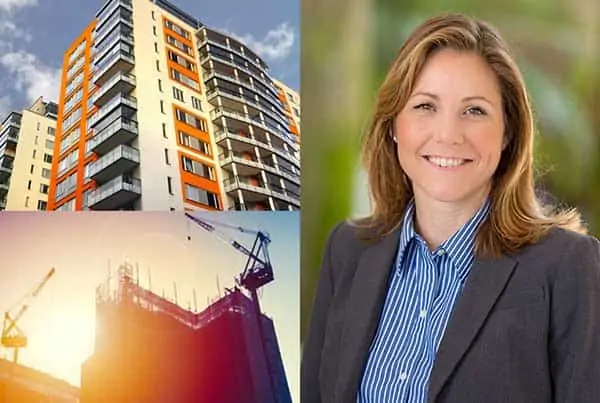
SCS Engineers announces Brittney Odom’s promotion to the Southeast region’s Environmental Services Director. Odom will continue expanding and integrating SCS’s environmental engineering and consulting operations to provide more streamlined and efficient services in her new role. She will lead environmental operations in Alabama, Florida, Mississippi, Georgia, and the Caribbean. As with all SCS leaders, she continues serving her clients in Boca Raton in her expanded role.
Odom supports real estate developers, municipalities, banks, and insurance firms to identify properties’ environmental conditions. Next, depending on soil, water, and geotechnical testing determines the appropriate environmental due diligence and the engineering activities necessary to redevelop them and be in 100% compliance with local and federal rules.
There is an active push to develop more affordable residential housing in the U.S. Real estate developers and residents want to be close to business and transportation hubs, but potential development sites could require remediation. Once agricultural sites, golf courses, or at one-time housing industrial operations, these properties need environmental testing, due diligence, possibly remediation, or vapor intrusion barriers to ensure the safe redevelopment. No matter the condition, properties with a past can return to pristine condition and make desirable residential and mixed housing locations, supporting economic development.
“It’s important to know and understand all of the options ahead of time to keep costs down and environmental quality up for sustainable communities,” stated Odem. “You need to reassure all parties that there is no leaking storage tank or anything that could compromise health.”
Her focus recently is on the redevelopment of large-size properties contaminated with arsenic and other legally applied pesticides. These property types include golf courses and agricultural land that have become inactive but are in high demand for residential use. These projects may need soil management, including remediation, soil blending, and placement restrictions.
Odom has years of experience conducting environmental site assessments, overseeing remediation activities, and submitting regulatory reports, including Phase I & II assessments in Florida, Tennessee, Louisiana, Texas, and the Caribbean. These focus on gas station properties and bulk storage terminals for large oil companies, often located on prime waterfront sites.
Additional highlights in Odom’s professional career include expertise in the applicable Florida Regulatory Chapters and Standard Operating Procedures. She also has experience in state and international cleanup efforts and their associated regulatory procedures. She participated in successful environmental closure efforts, with imposed engineering controls and property restrictions.
Odom has ten years of experience managing subsurface investigation and conducting oversight during remedial activities, including source removal and remediation system installation. She holds certifications in 40-Hour HAZWOPER/OSHA training, Loss Prevention System, CPR, RCRA Hazardous Waste, DOT Hazardous Waste, and American Petroleum Institute certification.
“Brittney’s breadth of experience solving the complexities of large scale redevelopment while meeting all environmental regulatory compliance enables her to innovative better solutions,” said Carlo Lebron, SCS vice president and director of SCS’s Southeast operations. “She’s an expert, with access to our deep bench of engineers, scientists, technology, and even economists within SCS.”
SCS Engineers and Florida East Coast Industries (FECI) are to be honored at the annual conference in Florida planned for August 2021. The firms will receive a 2021 Engineering Excellence Award by the American Council of Engineering Companies of Florida. The honor acknowledges SCS for the environmental engineering firm’s innovative design that integrates groundwater remediation with the stormwater management system on a 500-acre former landfill site. The design enabled the developer to remediate the former landfill into the Countyline Corporate Park in Southeast Florida.
Industrial real estate is in high demand, but former landfills and brownfields present environmental challenges that can become cost-prohibitive to redevelop without sound environmental expertise. FECI retained the professional services of SCS Engineers to provide consulting and design services addressing the environmental concerns preventing the transformation of a former landfill into a state of the art business park.
Environmental guidelines require 28% (or about 140 acres) of the site to be set aside for stormwater retention. The set aside would require the relocation of several thousand cubic yards of waste and prevent the 140 acres’ redevelopment. The estimated loss of $300 million in potential real estate sales, coupled with the groundwater remediation expense, made the site redevelopment cost-prohibitive. Unless resolved, the problem also impeded FECI’s corporate sustainability goals.
SCS’s experts in landfill design, closure, and remediation, developed a solution tying together the groundwater remediation and stormwater management systems. The integrated system allows for shallow aquifer recharge with stormwater and captures impacted groundwater at the site’s boundary. “We were able to provide an alternative design acceptable to all the permitting agencies, eliminating the need to set aside large areas for stormwater retention,” said Mr. Som Kundral, P.E., SCS’s senior project manager.
SCS’s remedial actions protect public health while opening the site for reuse. The project will be completed in phases. Phase I, consisting of 160 acres, is complete, with two million square feet of occupied businesses and a 30-acre community park. Development of the other three phases, which include another six million square feet, is underway.
The development will create hundreds of new jobs, deliver several hundred million dollars to the city and county tax base, and provide a 30-acre public park. “The engineering solution protects the environment while meeting FECI’s strategic, social, economic, and sustainability goals,” said Mr. Eduardo Smith, P.E., SCS’s senior vice president of client success.
Learn more about these related topics, events, and case studies at SCS Engineers:
As large tracts of geographically desirable vacant land become scarcer, residential and commercial property developers are increasingly turning to old landfills or former dumps. However, such redevelopment is complex and rife with uncertainties. When compared to greenfield development, the land acquisition costs are lower. Still, any savings are typically offset by greater environmental and infrastructure costs associated with the foundation, landfill gas management, stormwater management, groundwater impacts, meeting closure requirements, and multiple regulatory agency coordination. Therefore, it is important to maximize the developable area while providing engineering solutions to make the project economically feasible. In this blog, we identify some options to reuse challenging sites and lessons learned to contribute to successful redevelopment projects.

Deep Dynamic Compaction
Old landfills or dumps present some unique soil stability challenges. Deep dynamic compaction (DDC) is a ground stabilization technique that has gained popularity in recent years to improve subsurface soil conditions. DDC involves dropping 6 to 30-ton weights from a height between 30 and 75 feet to achieve the desired soil compaction. DDC can effectively apply to a range of subsurface materials, including former C&D debris or municipal solid waste dumps.
DDC provides a stable foundation for future development, minimizes differential settlement while leaving the landfill waste in place, and eliminates the costs associated with removing, transporting, and disposing of buried waste, costing millions of dollars. For simplicity’s sake, let’s consider a 1-acre old landfill or a dumpsite with an average of 15 feet of waste. If excavating the waste and replacing it with clean fill, the disposal fee costs for the excavated waste alone could exceed $400,000. Alternatively, DDC costs range from $1.50 to $2.00 per square foot or $65,000 to $87,120 per acre, excluding mobilization, which costs around $30,000.
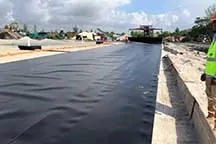
Gas Mitigation Systems
Constructing buildings on top of dynamically compacted areas generally requires a combustible gas barrier layer below the building foundation to manage subsurface combustible gases (typically methane). The barrier is required because the waste remains in place. In its simplified form, gas mitigation systems include:
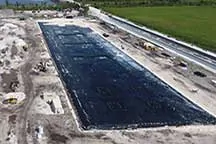
These gas mitigation systems can be either a passive or an active system with a blower. The cost of such systems varies depending on the size of the building, location, and type of liner system used. Typical capital costs for passive systems are in the range of $7 to $9 per square foot for the spray-applied liner and $3 to $4 per square foot for the HDPE liner. For an active system using blowers, add $3 to $4 per square foot. The designer configures a system from these options to address the client’s risk preference and considering future tenant preferences.
Using innovative approaches, impaired lands are increasingly attractive to developers. Beyond the cost-saving benefits to developers realized through DDC and an appropriate gas mitigation system, such projects also create local jobs, increase the tax base, and protect public health and the environment.
About the Authors:

At SCS, we’re proud that our services, vision, and corporate citizenship support community revitalization through brownfield redevelopment and land reuse.
The U.S. Environmental Protection Agency in 2017 estimated that roughly 40 percent of all Americans, including a quarter of all children, live within 3 miles of a brownfield site that has received EPA funding. This is a conservative estimate, as only 5.5% of brownfields nationwide have benefited from EPA resources. But these striking numbers clarify the degree to which remediating and repurposing contaminated and underutilized properties has transformative potential to protect our residents’ health and safety.
SCS firmly believes that all blighted, abandoned, and underutilized properties have a future as community assets. We support this vision through the services we provide as well as through our corporate citizenship. The partnership of SCS technology and environmental know-how with CCLR is powerful. There is no shortage of possibilities for brownfields now; ski resorts, parks, mixed-use properties, solar farms, really almost any infrastructure is possible.
SCS is proud to support the Center for Creative Land Recycling (CCLR, or “See Clear”), the leading national nonprofit dedicated to transforming communities through land recycling. Over the past two decades, CCLR has convened, navigated, and influenced the redevelopment industry. Their programs educate the public and community stakeholders to clean up and repurpose underutilized and environmentally impacted properties in a sustainable, equitable and responsible manner.
CCLR and SCS share the belief that with the right training, incentives, and conditions — chiefly, an active corporate partner/investor, community support, and municipal leadership — the redevelopment of brownfields changes communities for the better. CCLR has produced two videos, “About CCLR” and “What is Land Recycling?,” which provide important perspectives about CCLR’s mission and accomplishments.
Dan Johnson, Jim Ritchie, and Amy Dzialowski are among the SCS staff who have worked with CCLR. They have spoken on panels at CCLR’s California Land Recycling Conference, participated in vapor intrusion study groups, teamed with CCLR on providing technical support to West Sacramento and other municipalities, and serve on the planning committee for the Brownfields 2021 Conference together.
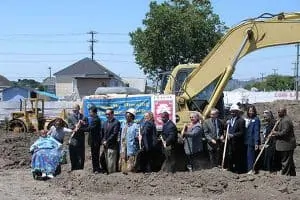
For more information about CCLR, brownfields, and property remediation, contact , or Jean Hamerman, Acting Executive Director of CCLR.
Brownfields, particularly those in urban infill areas, can be successfully redeveloped into housing and other productive uses with significant benefits to the surrounding communities. Redeveloping brownfields is also an important strategy in addressing California’s affordable housing crisis.
However, funding for brownfield redevelopment falls well short of the need, which is exacerbated by the COVID-19 pandemic and resulting impacts on budgets. But there is hope. Proposed legislation and budget requests for new sources of funding for brownfield redevelopment are proposed in excess of $100M. These policy shifts and resulting funding would make a big difference.
At the upcoming California Land Recycling Conference, several experts from the public and private sectors will share their insights and the latest information about these potential funding sources and opportunities for affordable housing and infill sites in California.
Moderated by Dan Johnson, Vice President & National Partner for Brownfield Redevelopment at SCS Engineers, the panelists are:
The conference is scheduled for Sept. 22-24, 2020. To join this interactive session, Sept. 23 from 2:15 to 3:00 PST, register at https://bit.ly/2FoWI89. Non-profit and student tickets are $25, government tickets are $50, and General Admission is $75.
Partial Reprint of EPA Press Release
Over the past three years alone, EPA has assessed 6,572 properties, completed cleanups at 638 properties, and made 2,900 properties ready for anticipated reuse. Over this same period, more than 43,000 jobs have been leveraged as a result of Brownfields’ actions.
EPA recently announced the selection of 155 grants for communities and tribes totaling over $65.6 million in EPA Brownfields funding through the agency’s Assessment, Revolving Loan Fund, and Cleanup Grant Programs. Many of the communities and tribes selected can potentially assess or clean up brownfield sites in census tracts designated as federal Opportunity Zones.
“Without redevelopment opportunities, urban and rural communities – even those with deep historic roots – can eventually wither,” said OLEM Assistant Administrator Peter Wright. “Brownfields remediation and revitalization support communities by investing in the redevelopment of existing properties in the community.”
Since EPA’s Brownfields Program began in 1995, it has provided nearly $1.6 billion in Brownfield funding to assess and clean up contaminated properties and return blighted properties to productive reuse. EPA’s Brownfields funding has leveraged more than $32.6 billion in cleanup and redevelopment from both public and private sources, which in turn has produced more than 167,000 jobs. This is an average of nine jobs per $100,000 of EPA investment and more than $17 in private funding for each dollar of EPA Brownfield grant funding.
Brownfields grants have been shown to:
Background:
A Brownfield is a property for which the expansion, redevelopment, or reuse may be complicated by the presence or potential presence of a hazardous substance, pollutant, or contaminant. The Brownfields program empowers local leaders and communities to transform underused and distressed properties into community assets across America. Brownfields funds assess and cleanup vacant, underused, and potentially contaminated properties so that property can be reused as housing, recreation, and open space, health facilities, social services, or commercial sites. There are estimated to be more than 450,000 Brownfields in the United States.
For more information on successful Brownfields program applications, site revitalization, and success stories nationwide visit Brownfields and Voluntary Remediation. If you’d rather jump right into a few success stories, click on these below:
Locate a Brownfields and remediation expert near you – SCS Staff
The Environmental Protection Agency (EPA) plans to make available approximately $5 million to provide supplemental funds to Revolving Loan Fund (RLF) cooperative agreements previously awarded competitively under section 104(k)(3) of the Comprehensive Environmental Response, Compensation and Liability Act (CERCLA). EPA will consider awarding supplemental funding only to RLF grantees who have demonstrated an ability to deliver programmatic results by making at least one loan or subgrant.
The award of these funds is based on the criteria described at CERCLA 104(k)(5)(A)(ii). The Agency is now accepting requests for supplemental funding from RLF grantees. Specific information on submitting a request for RLF supplemental funding is described below and additional information may be obtained by contacting EPA’s Regional Brownfields Coordinators, your SCS Project Manager, or the Brownfield’s Practice at .
Requests for funding must be submitted to the appropriate EPA Regional Brownfields Coordinator by April 8, 2020. A request for supplemental funding must be in the form of a letter addressed to the appropriate Regional Brownfields Coordinator with a copy to Rachel Congdon at and to Rachel Lentz at . Contact your SCS Project Manager or for more information regarding filing if you are unsure.
Background
The Small Business Liability Relief and Brownfields Revitalization Act added section 104(k) to CERCLA to authorize federal financial assistance for brownfields revitalization, including grants for assessment, cleanup and job training. Section 104(k) includes a provision for EPA to, among other things, award grants to eligible entities to capitalize Revolving Loan Funds and to provide loans and subgrants for brownfields cleanup. Section 104(k)(5)(A)(ii) authorizes EPA to make additional grant funds available to RLF grantees for any year after the year for which the initial grant is made (noncompetitive RLF supplemental funding) taking into consideration:
Eligibility
In order to be considered for supplemental funding, grantees must demonstrate that they have significantly depleted funds (both EPA grant funding and any available program income) and that they have a clear plan for utilizing requested additional funds in a timely manner.
Grantees must demonstrate that they have made at least one loan or subgrant prior to applying for this supplemental funding and have significantly depleted existing available funds. For FY2020, EPA defines “significantly depleted funds'” as uncommitted, available funding is 25% or less of total RLF funds awarded under all open and closed grants and cannot exceed $600,000. For new RLF recipients with an award of $1 million or less, funds will be considered significantly depleted if the uncommitted, available funding does not exceed $300,000.
Additionally, the RLF recipient must have demonstrated a need for supplemental funding based on, among other factors, the list of potential projects in the RLF program pipeline; demonstrated the ability to make loans and subgrants for cleanups that can be started, completed, and will lead to redevelopment; demonstrated the ability to administer and revolve the RLF by generating program income; demonstrated an ability to use the RLF grant to address funding gaps for cleanup, and demonstrated that they have provided for past and will provide for future community benefit from past and potential loan(s) and/or subgrant(s).
The EPA encourages innovative approaches to maximize revolving and leveraging with other funds, including the use of grant funds as a loan loss guarantee or combining with other government or private sector lending resources. Applicants for supplemental funding must contact the appropriate Regional Brownfields Coordinator to obtain information on the format for supplemental funding applications for their region.
Blighted properties are common in many urban areas, and with due diligence often present cost-effective and profitable redevelopment opportunities. Redevelopment of these types of projects is often referred to as Brownfield projects if considering the presence or potential presence of contaminants in the subsurface. Brownfields redevelopments can present great benefits and advantages to the surrounding community.
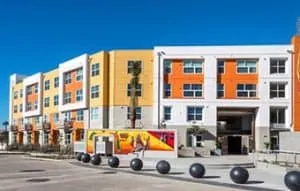
Advantages of the redevelopment of these properties include: revitalizing a property and surrounding properties, creating jobs, rejuvenating businesses, adding much-needed housing, increasing tax revenue, reducing crime, and increasing the efficiencies and quality of life for residents and workers.
Redevelopment of blighted properties does come with challenges, such as density, parking, financing, city approvals, and more. Blighted properties can have environmental issues that are best addressed proactively to reduce the risk of cost and schedule overruns as future liability issues during redevelopment.
These issues should start to be addressed during due diligence and before construction activities commence to reduce the uncertainty on potential project costs and timeline implications. Environmental issues can sidetrack the development process of some properties but most sites, if handled correctly, can present significant upside if these issues are identified during the due diligence and integrated into the development processes.
Common environmental concerns include:
Identifying environmental risks before the acquisition of properties is critical, as is assigning potential costs to these risks. Depending on the nature of the transaction, these items are often useful as leverage during negotiations.
A Phase I Environmental Site Assessment is a good starting place for identifying whether environmental issues may exist at a property. If a Phase I identifies potential risks, these reports may recommend additional investigation (Phase II) in the form of soil, soil vapor, and groundwater sampling. Phase II is used to identify whether contamination is present (i.e., from fuels, solvents, pesticides, toxic metals), and with enough sampling can determine the extent and magnitude of contamination.
Resolving these impacts can include leaving and managing impacted soil in place as much as possible since the significant cost from impacted soil is digging it up and paying to dispose of it. Regulatory agencies such as the local health departments, if approached under voluntary cleanup assistance programs, can accommodate leaving all or a good portion of impacted soil in place if the risks to human health and the environment are identified and resolved in a mitigation plan.
For more significant contamination issues, such as extensive soil and groundwater contamination from a gas station or dry cleaner releases, funding in the form of State or Federal grants can be available. Obtaining a grant with the help of a qualified environmental consultant can be the difference-maker in acquiring, cleaning up, and redeveloping a blighted property. These grants don’t typically cover all the costs associated with these cleanups but can cover the majority of these costs with some additional time required to do a cleanup.
Developers can also take out an environmental insurance policy to console a nervous lender or investor. Environmental insurance can cover clean-up requirements, third-party claims for bodily injury and property damage, and associated legal expenses resulting from pollution or contamination. Policies with various term lengths and deductible amounts are available to satisfy the concerns of lenders or equity investors.
The redevelopment of blighted urban properties is a necessary part of the life cycle of a property and a community. It’s critical to identify potential environmental risks during the due diligence process – before you choose to purchase the site. With proper planning, the mitigation or remediation of these impacts can be incorporated into the development process and result in a vibrant, profitable project that protects human health and the environment, and help owners, lenders, investors, and users of these properties sleep well at night.

Learn more about Brownfields | Learn more about Due Diligence
Wednesday, December 11, 10:45 am – 11:45 am, Room 403A
Track 2: Financing Options, Real Estate, & Economic Development

4:30 pm – 6:00 pm, Exhibit Hall, West Hall A


Mr. McLaughlin advises developers, contractors, lenders and land development professionals on the technical and regulatory requirements for construction on Brownfields’ sites nationwide. His combined engineering and legal background provides an unusual perspective on land development where hazardous wastes or other environmental challenges are present. Redevelopment of closed landfills is an area of special interest; he worked on his first such project in 1976.
Mr. McLaughlin has worked at some three dozen Superfund National Priorities List sites in 17 states, and on scores of regulatory compliance, voluntary cleanup, and remediation projects for commercial, industrial, municipal, and military clients.
Thursday, December 12, 3:30 pm – 4:45 pm, Room 411
Track 1: Sustainability, Livability, Resiliency
This 75-minute clinic provides a fun and engaging hands-on experience that will inspire you to tackle the challenges of stormwater flooding using GSI on brownfields. Experts, including Jonathan Meronek, will explain the applications, techniques, and benefits of using GSI on any project site, including the challenges of implementing GSI on Brownfield Sites. During the guided exercise, participants will break into small think tanks, and each think tank will have an opportunity to design their own solution. Come to this session to soak up information on techniques and strategies for integrating GSI into your community’s overall planning efforts.